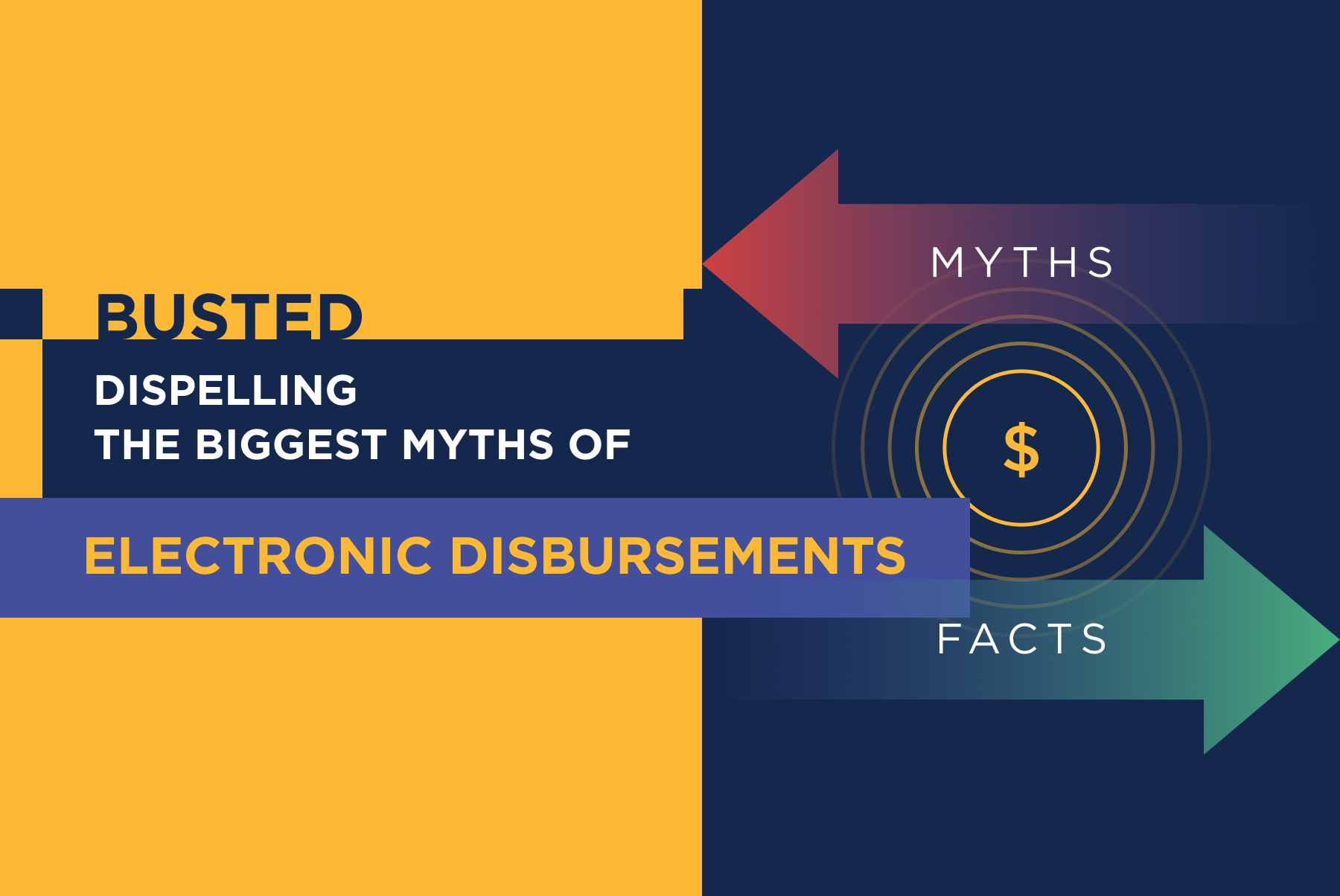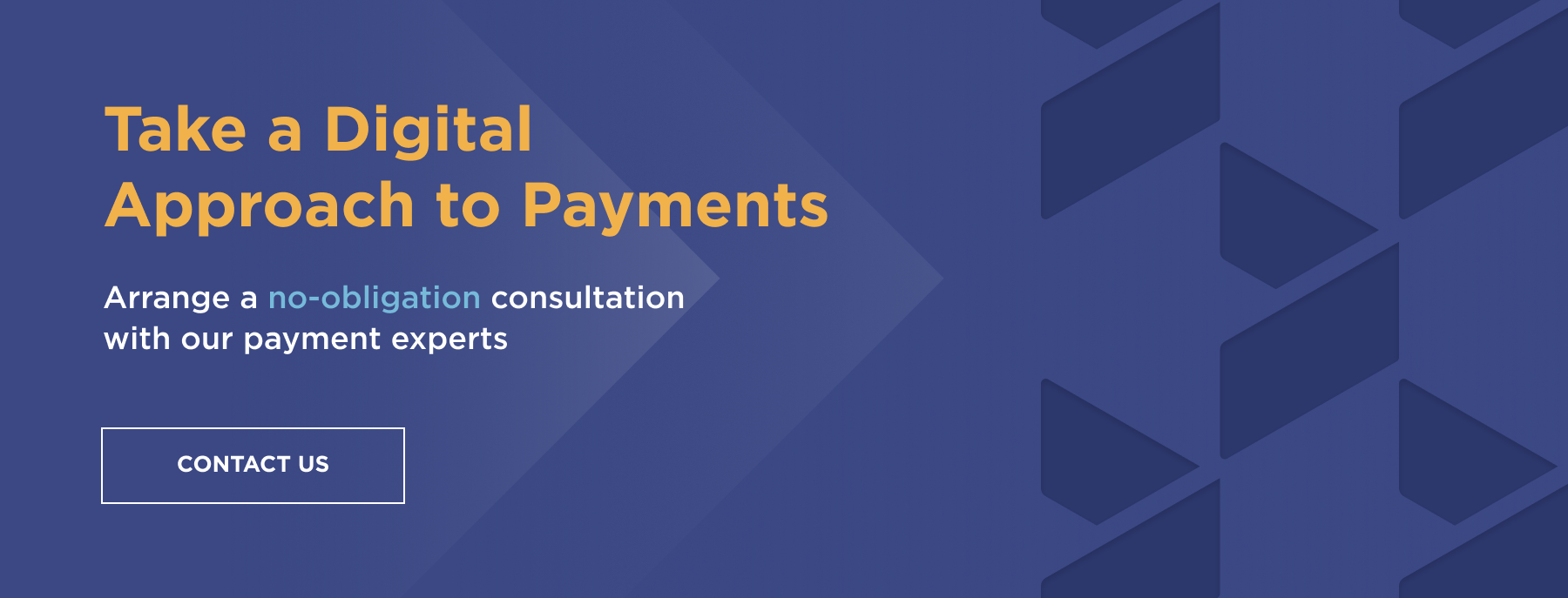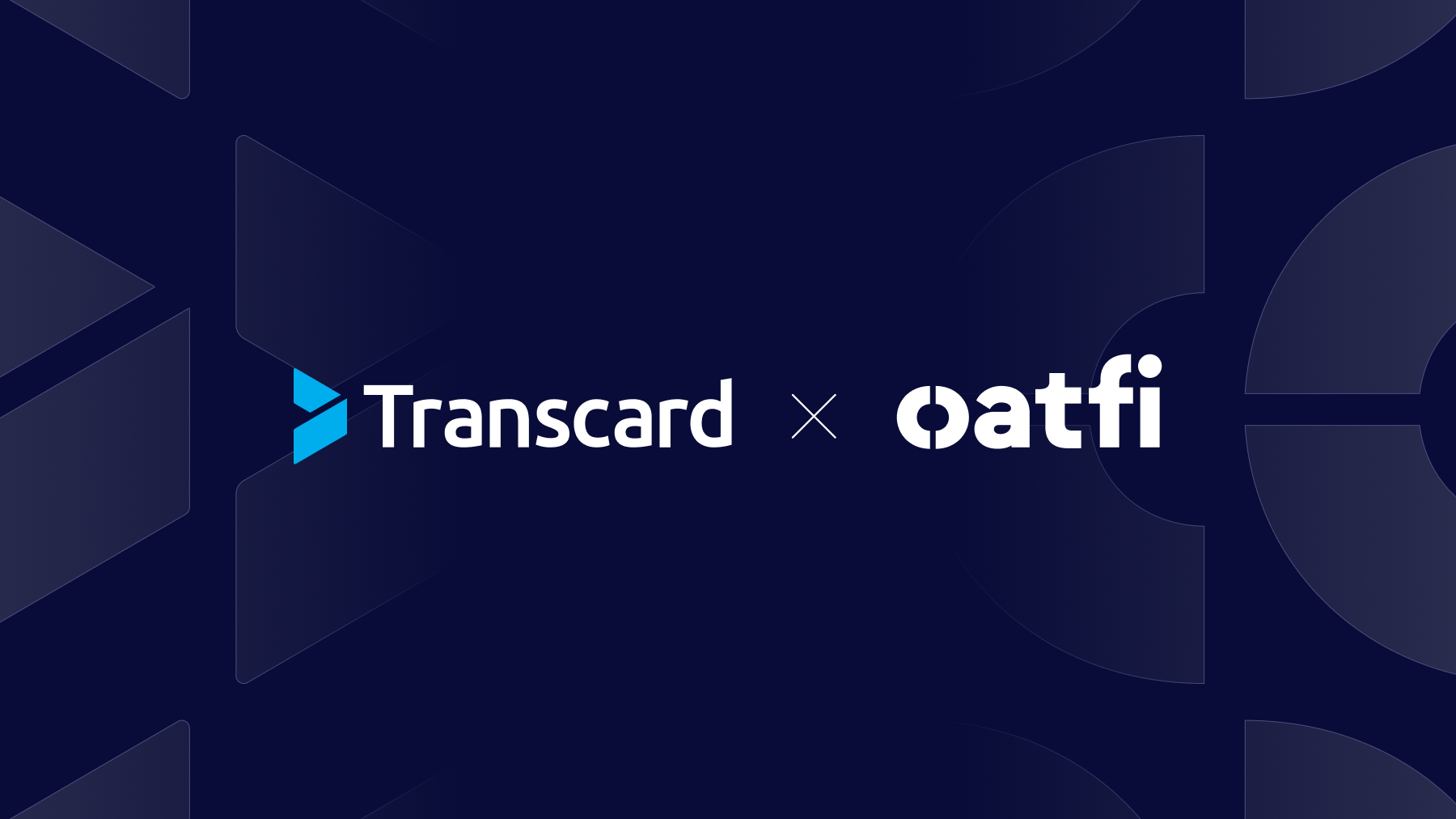Myths can be fun.
Like the myth that giant alligators live in the sewers of New York City.Or that Walt Disney is cryogenically preserved somewhere in the Disneyland theme park.
Or that chewing gum cannot be digested by a human’s stomach.
But myths aren’t fun when they hold businesses back from making necessary changes.
Like disbursing funds electronically instead of with paper checks.
Here are the biggest myths regarding electronic disbursements that your organization should ignore:
 “Only certain industries can benefit from electronic disbursements.”
“Only certain industries can benefit from electronic disbursements.”
![]() Disbursement challenges vary across industries. That’s why leading omni-channel payment platforms incorporate payment methods, administrative workflows and open APIs to meet any industry’s business needs.
Disbursement challenges vary across industries. That’s why leading omni-channel payment platforms incorporate payment methods, administrative workflows and open APIs to meet any industry’s business needs.
For starters, property and casualty insurers can migrate from costly, inefficient checks and pay claims in the policyholder’s preferred method, including card or same day ACH. Property management firms can provide tenants with a self-service portal for reviewing documents, submitting digital signatures and receiving security deposit refunds in their desired payment format.
Healthcare payers can provide patients with co-pay debit cards to assist with the expense of pharmaceutical prescriptions, streamlining administration and ensuring program rule compliance. Transportation companies can instantly make payroll and 1099 payments to drivers via reloadable debit cards. Contract and gig workers also can be paid for their work with reloadable debit cards. The opportunities for electronic disbursements across industries are virtually endless.
 “Suppliers will never accept card payments.”
“Suppliers will never accept card payments.”
![]() Receiving payments via card enables suppliers to better manage their cash with more predictable payment timing and streamline cash application through the receipt of rich remittance detail. It is not uncommon for 30 percent of a buyer’s spending to be paid with cards. But omni-channel payment platforms provide options for suppliers who prefer to receive payments via other methods, including real-time payments, instant payments, Zelle, same-day ACH, direct deposit and cross border.
Receiving payments via card enables suppliers to better manage their cash with more predictable payment timing and streamline cash application through the receipt of rich remittance detail. It is not uncommon for 30 percent of a buyer’s spending to be paid with cards. But omni-channel payment platforms provide options for suppliers who prefer to receive payments via other methods, including real-time payments, instant payments, Zelle, same-day ACH, direct deposit and cross border.
 “Paying suppliers electronically will create more work for accounts payables staff.”
“Paying suppliers electronically will create more work for accounts payables staff.”
![]() An omni-channel payment platform can significantly reduce the amount of time that payables staff spend disbursing funds. Payments can be effortlessly posted to an accounting or general ledger system. Staff and suppliers can instantly access information on payments through a simple online search. The platform can prevent the possibility of suppliers receiving duplicate or wrong payments. And electronic payments are less likely to escheat and create downstream administrative headaches.
An omni-channel payment platform can significantly reduce the amount of time that payables staff spend disbursing funds. Payments can be effortlessly posted to an accounting or general ledger system. Staff and suppliers can instantly access information on payments through a simple online search. The platform can prevent the possibility of suppliers receiving duplicate or wrong payments. And electronic payments are less likely to escheat and create downstream administrative headaches.
 “An electronic payment platform could never meet our business needs.”
“An electronic payment platform could never meet our business needs.”
![]() Paying suppliers can be complex. That’s why leading omni-channel payment platforms include built-in administrative workflows such as interactive messaging, attachments, digital signatures and dynamic ID verification that can be configured to any business need. Built-in administrative workflows ensure that payers maintain control over their unique disbursements process.
Paying suppliers can be complex. That’s why leading omni-channel payment platforms include built-in administrative workflows such as interactive messaging, attachments, digital signatures and dynamic ID verification that can be configured to any business need. Built-in administrative workflows ensure that payers maintain control over their unique disbursements process.
 “Migrating to electronic payments will require a lot of IT involvement.”
“Migrating to electronic payments will require a lot of IT involvement.”
![]() Most IT departments have a months-long backlog of projects awaiting their attention. But an omni-channel payment platform with open APIs makes it easy to integrate the platform with legacy systems and to quickly begin paying suppliers electronically. Single sign-on (SSO) capabilities enable suppliers to effortlessly navigate across different payment channels and manage their payments and adjust their allocations from an intuitive self-service online portal. And the managed services offered with some omni-channel payment platforms provide configuration and development assistance and 24/7 call center support for payers as well as business and consumer customers.
Most IT departments have a months-long backlog of projects awaiting their attention. But an omni-channel payment platform with open APIs makes it easy to integrate the platform with legacy systems and to quickly begin paying suppliers electronically. Single sign-on (SSO) capabilities enable suppliers to effortlessly navigate across different payment channels and manage their payments and adjust their allocations from an intuitive self-service online portal. And the managed services offered with some omni-channel payment platforms provide configuration and development assistance and 24/7 call center support for payers as well as business and consumer customers.
 “Paying suppliers electronically is risky.”
“Paying suppliers electronically is risky.”
![]() An omni-channel payments platform mitigates the risk of fraud with built-in controls and tracking and advanced technologies for safeguarding sensitive data. Leading omni-channel payments platforms also offer tokenized cards, ID verification services, and access controls to limit the number of individuals who can initiate payments. And some omni-channel payment platforms comply with PCI, GLBA and NACHA standards and other regulatory guidelines, and go through independent assessments to stay one step ahead of the fraudsters. It is for these reasons that checks are the most vulnerable payment method to fraud, per the Association for Financial Professionals (AFP).
An omni-channel payments platform mitigates the risk of fraud with built-in controls and tracking and advanced technologies for safeguarding sensitive data. Leading omni-channel payments platforms also offer tokenized cards, ID verification services, and access controls to limit the number of individuals who can initiate payments. And some omni-channel payment platforms comply with PCI, GLBA and NACHA standards and other regulatory guidelines, and go through independent assessments to stay one step ahead of the fraudsters. It is for these reasons that checks are the most vulnerable payment method to fraud, per the Association for Financial Professionals (AFP).
 “Electronic disbursements provide inadequate reporting.”
“Electronic disbursements provide inadequate reporting.”
![]() Leading omni-channel payment platforms include built-in business intelligence capabilities for accelerating decision-making. Open APIs connect the platform to critical sources of data while tools for prepping data on the omni-channel payment platform simplifies reporting. For instance, users can access performance metrics in real-time to track their progress against key benchmarks.
Leading omni-channel payment platforms include built-in business intelligence capabilities for accelerating decision-making. Open APIs connect the platform to critical sources of data while tools for prepping data on the omni-channel payment platform simplifies reporting. For instance, users can access performance metrics in real-time to track their progress against key benchmarks.
Don’t let these myths be the reason your organization continues making check disbursements.




